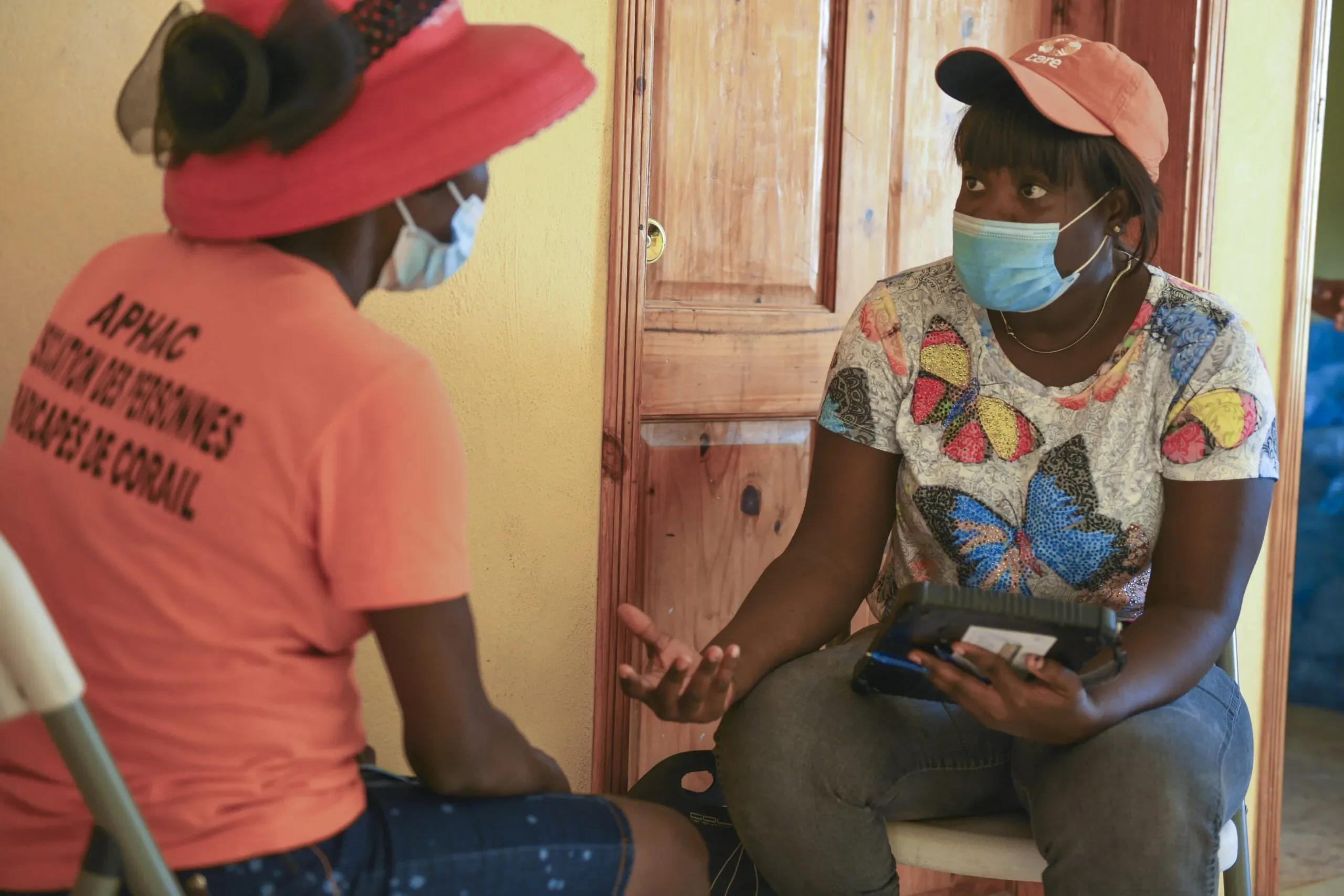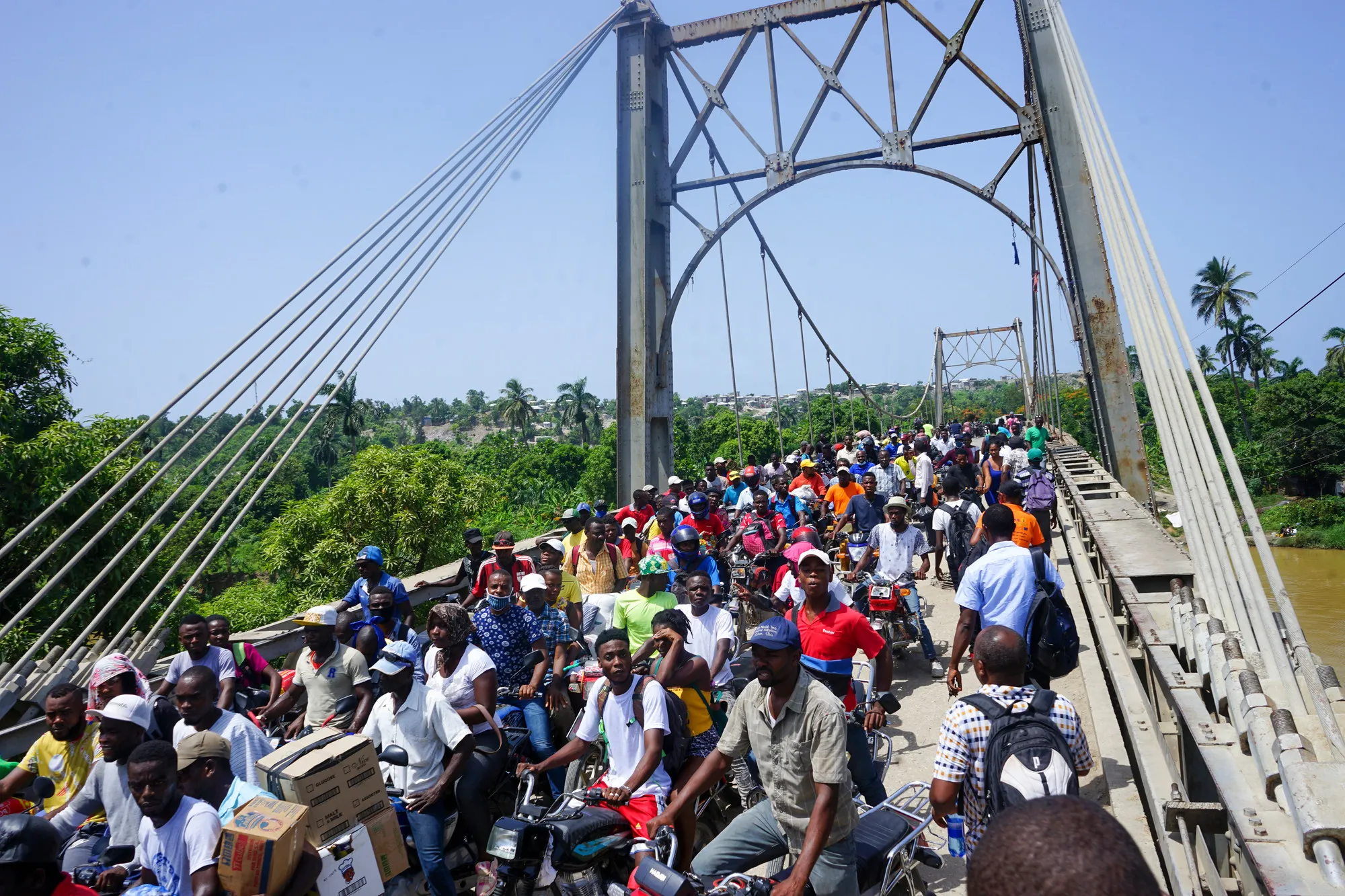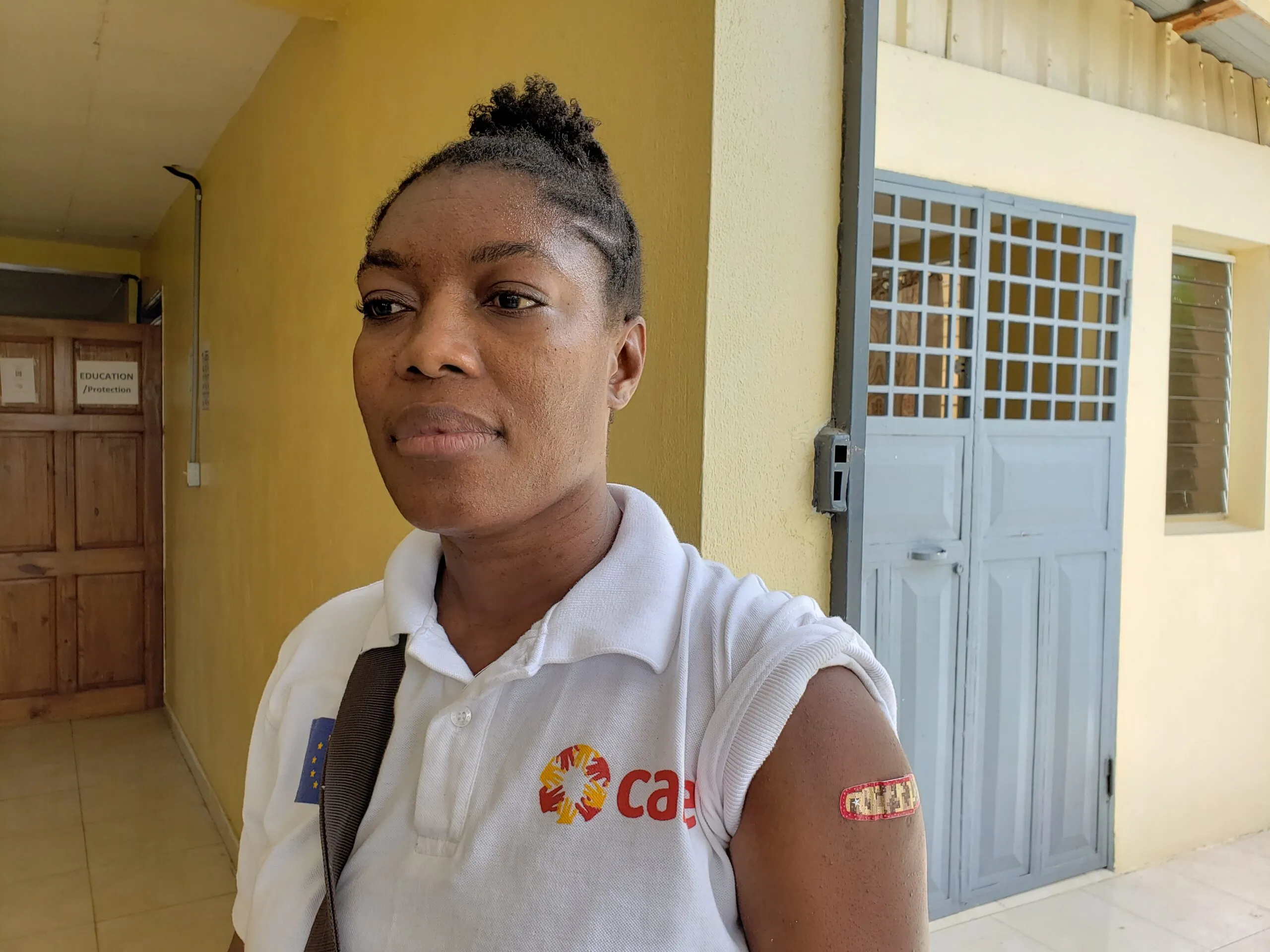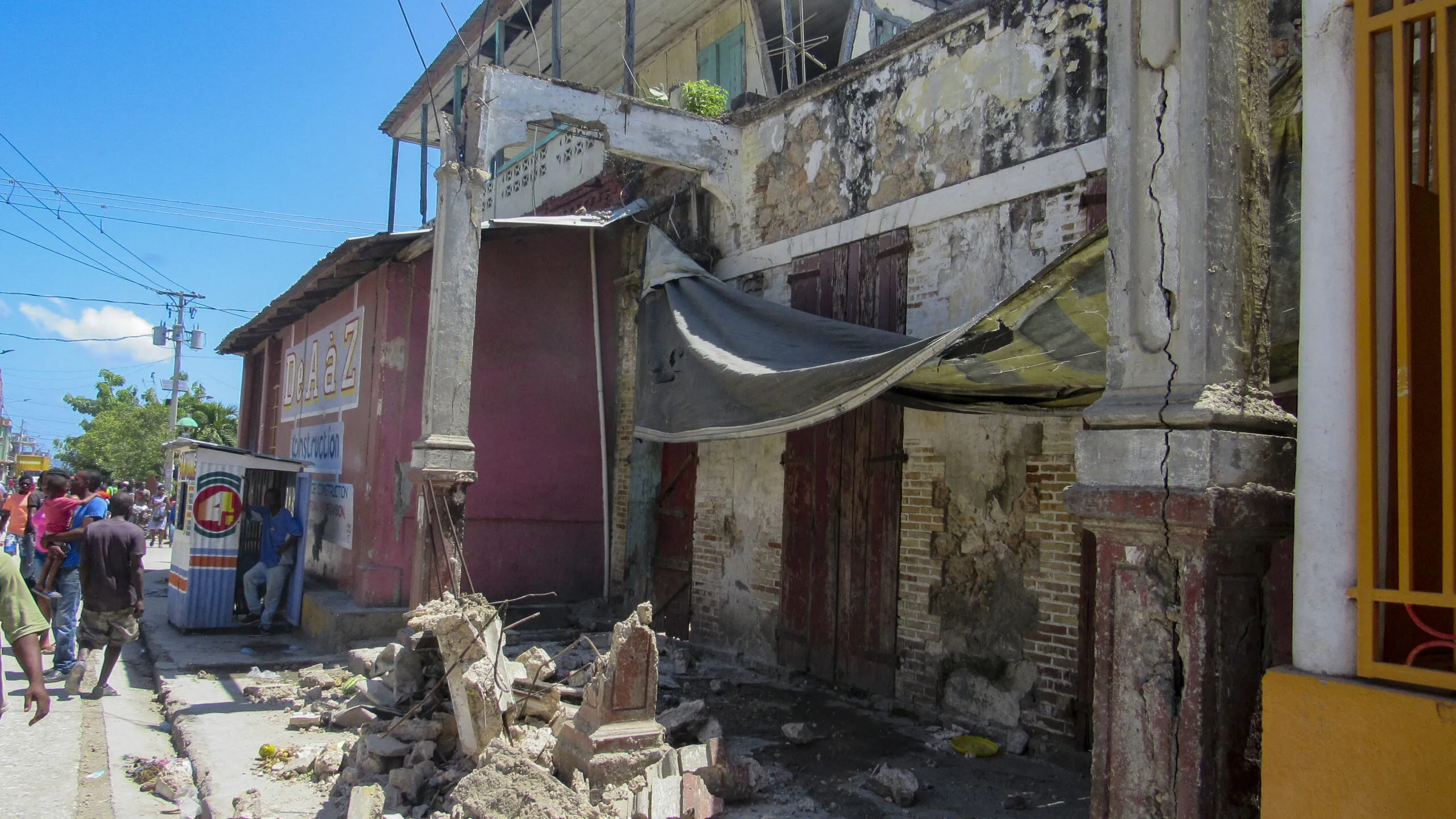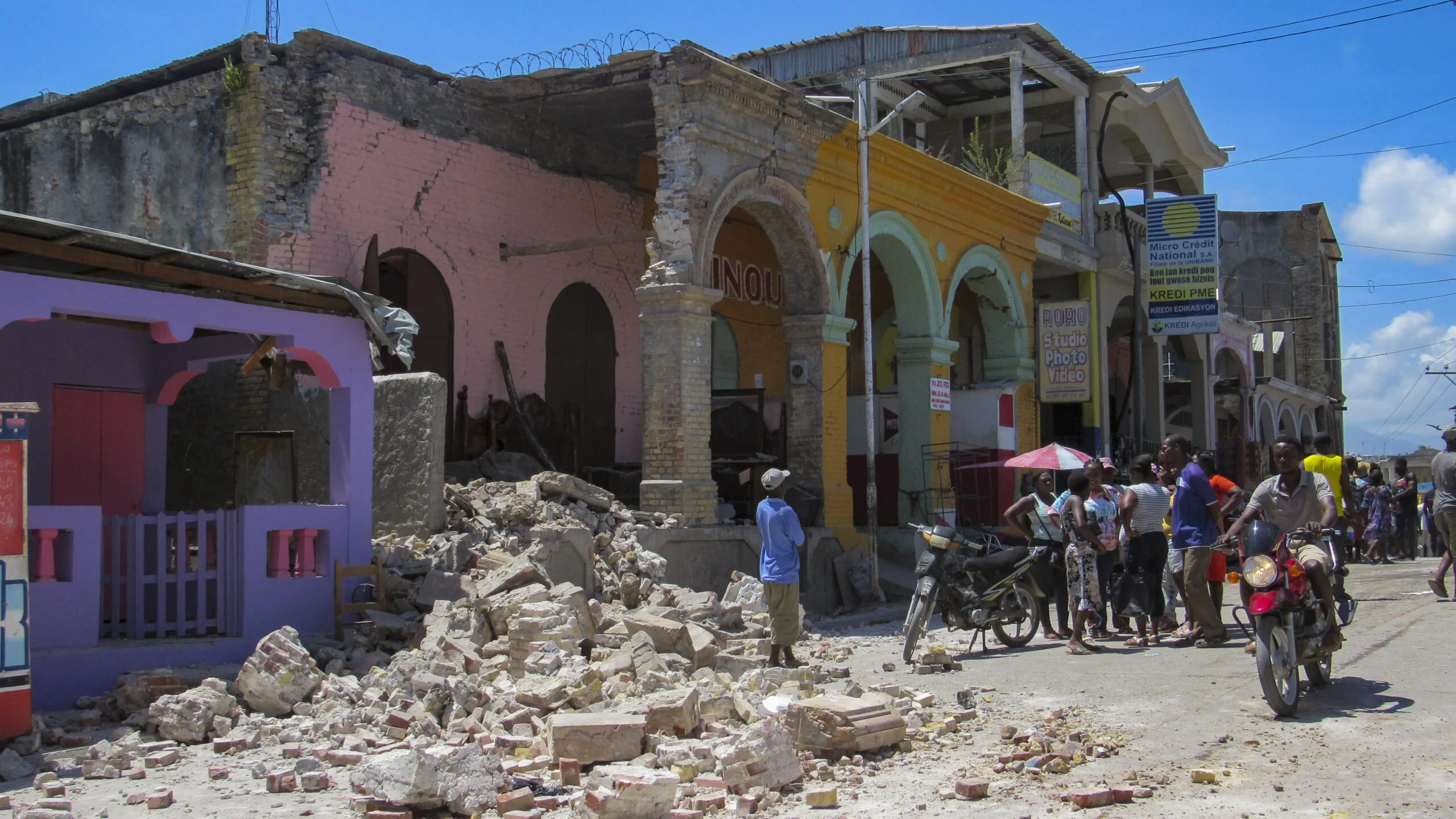When a 7.2 magnitude earthquake rocked Haiti in August 2021, the nation’s COVID-19 vaccination efforts were put on hold, while medical personnel, equipment, and logistical support were redirected toward disaster response. The earthquake caused over 2,200 deaths and left nearly 650,000 Haitians in need of urgent humanitarian aid. It damaged or destroyed health facilities, making it even more difficult for Haiti’s under-resourced health system to keep pace with the country’s needs. A CARE Rapid Gender Analysis conducted in September showed that 34% of people in earthquake-affected areas lacked access to basic services due to the pandemic’s strain on the healthcare system.

